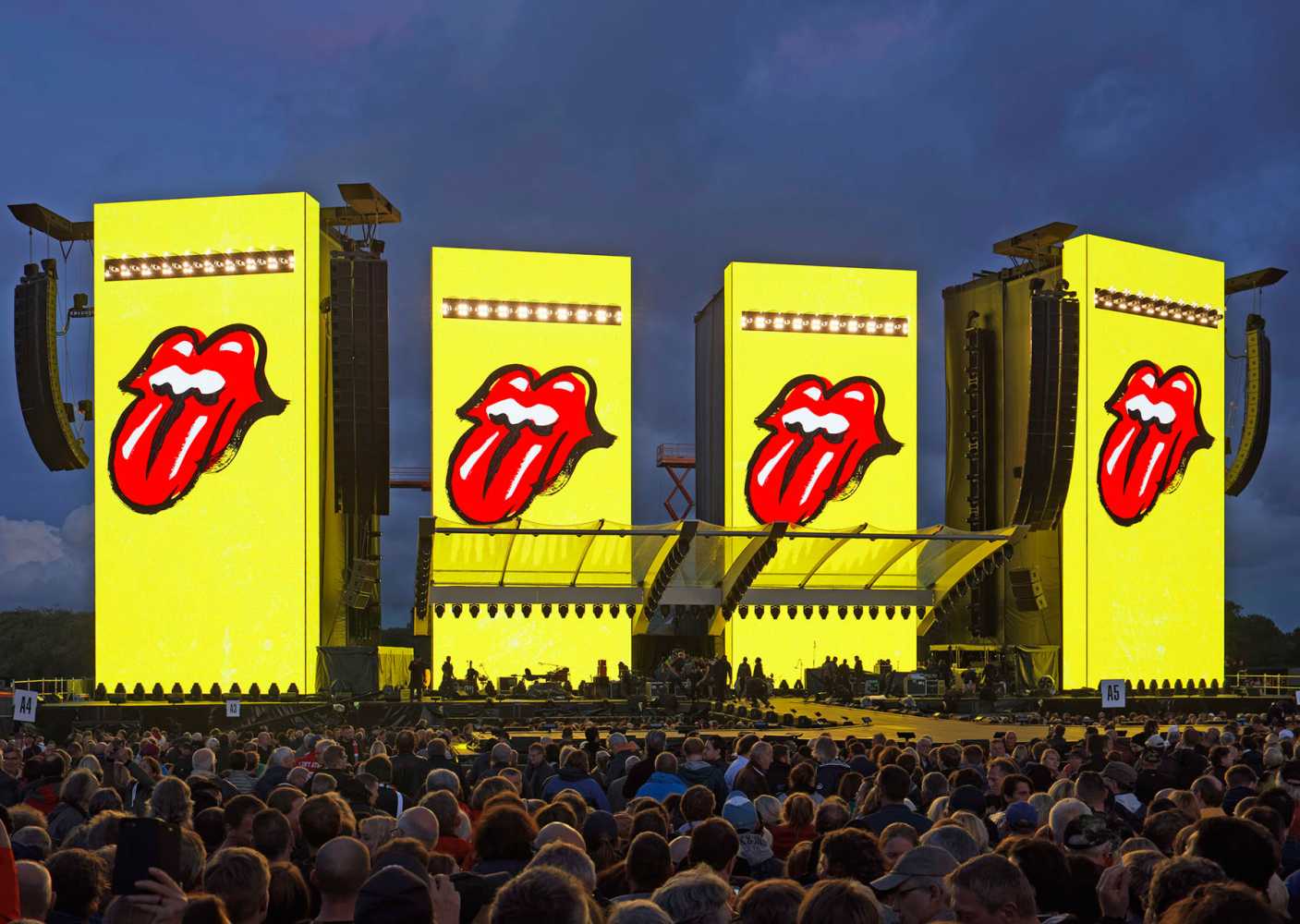Robe rocks on Rolling Stones No Filter tour
- Details

Patrick and associate designer Terry Cook of Woodroffe Bassett design (WBD) worked closely with stage architects Stufish on developing the show’s overall aesthetic.
With many moving lights on the rig, they sought a high-powered fixture to occupy four 'slots' just below the tops of four imposing 23m high by 11m wide monolithic video towers which define the performance space.
"Patrick and I needed a multi-functional fixture and knew the positions would be hard to access and given the complexity of CDM rules and regulations and the requirement that crew be able to access the fixtures safely - a lot of thought went into the process," explained Terry. “We decided on BMFLs because they are high powered, intense multi-functional moving lights with nice sized front lenses (giving rise to the much-loved quality fat beam) that are also reliable."
The lights were used to shoot into and illuminate the audience, to create classic huge aerial looks and to beam down onto the stage and band as they worked that
While video was always going to be a major part of No Filter, it was decided at the outset not to have one large surface, instead they went with four towers – giving a more interesting look and additional depth to the performance space, as well as being ideal as classy portrait IMAG scenes for featuring the four Rolling Stone band members.
Some of Patrick’s inspiration for the monolithic style of the video towers came from original artwork from Stanley Kubric’s seminal 2001: A Space Odyssey movie, and once the core creatives including the Stufish team led by Ray Winkler and video content producer Sam Pattinson of Treatment were locked in to the concept of the clean stand-alone look, it was vital that there were no compromises.
Belgian entertainment engineering specialist WIcreations was also involved in calculating, producing and fabricating some special elements and imaginative rigging to make this aspect of the design work as elegantly as Patrick had envisioned.
As the video crew build the screens out of LED frames filled with 12 mm Saco S12 LED - supplied by Solotech - on site, they created the slots about 2 meters below the top, and once the space was complete, lighting contractor Neg Earth’s crew slid a lighting frame into the gaps which locked to the existing screen supports. Then the BMFL Spots were installed.
The fixtures were located via a locking bracket and sat at 90 degrees to the stage. Front panels with 1-cell DWE Moles were then fitted to cover the base of the BMFLs, followed by the rain shields, then the rear rain hat. The process of rigging each row of nine BMFL Spots neatly and securely took only around 15 / 20 minutes thanks to some nifty and well-engineered solutions.
WBD also looked after the video integration on the tour. A d3 media server system (now called ‘disguise’) was spec’d for the playback content and to format IMAG feeds coming from camera director Nick Keiser to give them a bit of extra love with effects and tints. Roland Greil from WBD, in the role of screens director and d3 programmer, looked after keeping the balance between all visual elements, which was key on a show like this.
Terry Cook ran the overall project for WBD, Ethan Weber was lighting director / operator, with Roland Greil and Nick Keiser looking after the video elements.
The tour was managed and coordinated on the road in Europe by production manager Dale ‘Opie’ Skjerseth.
(Jim Evans)
















